A brief personal history.
This piece addresses macro lenses – those which provide significant image scale when focused close. Regard this as a teaser for the unfolding story of my macro photography experience.
In Themes have their uses I ruminated on the need for themes – goals if you like – in your photography, if quality results were to be the result. After thinking more about it, I decided to do something pretty foreign, photographically, (God knows, I am foreign enough ethnically) to my way of working. So somehow the idea of a series of macro photographs came to mind.
The earliest macro optic I recall knowledge of, as a teenager, is the Kilfitt Macro Kilar. It was for 35mm cameras and went to half or full life size, depending on the model. Given that it was 40mm in focal length, that would have made for pretty tight clearance between subject and lens, making lighting tricky, but it was beautifully made and an original idea. I don’t know, but I’ll bet the aperture was manually set or pre-set, so it must have been a real handful in use. But Kilfitt had a reputation for great optics. Famous bird photographer Eric Hosking frequently used a 400mm Kilfitt Tele-Kilar on his Contarex. A rare and costly beast, Kilfitt was known (like Novoflex) for making adapters for a wide range of cameras.
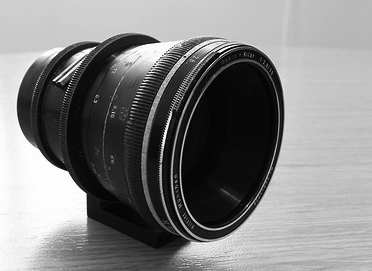
40mm Kilfitt Macro-Kilar
Many Alpa SLRs, beautifully made in Switzerland, came with Kilfitt lenses, so the name has a long and storied tradition of providing optics to the best. Others came with Swiss Kern lenses, most famously the 50mm f/1.9 Macro Switar which focused down to some 7 inches, so maybe 1:8. Gorgeous Swiss engineering, it had the coolest depth of field indicators – colored dots would show up on the barrel as the focus was changed. I can’t swear to this but I think the lens also opened its diaphragm as you focused closer. Optical laws dictate, after all, that at 1:1 a lens loses 2 stops of effective aperture, owing to the illumination drop off in the much extended optic, before light rays strike the film or sensor. Zeiss Ikon conferred this same feature – a piece of mechanical engineering genius – upon several of its lenses for the Contarex, most of which focused especially close, if not in the macro range.
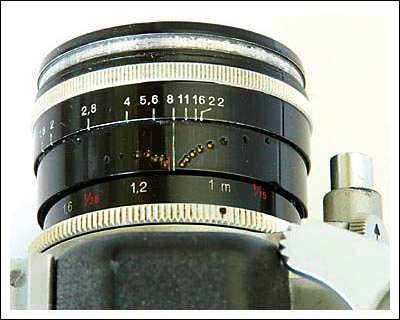
Kern Macro-Switar
Macro range? Choose your definition. For me it’s where I start seeing things I otherwise missed, so I suppose 1:4 and larger.
The first macro lens I handled was a Nikon Micro-Nikkor (never did understand why it wasn’t named a macro-Nikkor) for the Nikon F SLR. It handled well and was made in the days when lens barrels were still metal rather than plastic. That feels good even though plastic makes far more sense when it comes to cost and impact resistance. Independent tests at the time raved about it. If I recall, it focused down to half-life size (1:2) and a 25mm extension tube got you to life size, or 1:1. By all accounts it was a decent all rounder, boasted a speedy f/3.5 aperture and decent resolution at infinity, with minimal field curvature.
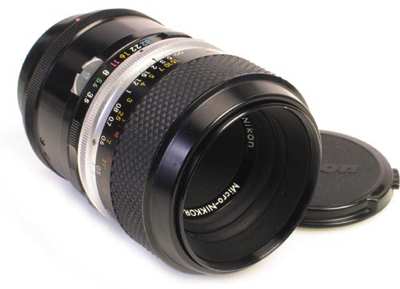
Nikon 55mm Micro-Nikkor with 25mm extension tube
The first really close focusing lens I owned – hard to call it a macro – was the Corfield 45mm Lumax on my Periflex 2. While the camera accepted Leica rangefinder screw thread lenses, it dispensed with the usual cam coupled rangefinder mechanism, opting instead for a small drop down mirror, like an inverted periscope. This, through a separate eyepiece, provided a strongly magnified (if upside down) image of the center of the point of view. Great for focusing but there was no way on earth you could frame accurately at close distances, and the lens focused down to some nine inches. Nice idea though, and nicely made in Britain.
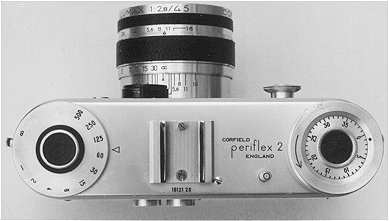
Periflex 2 with 45mm Lumax
After that the closest I got to anything was using the 50mm Dual Range Summicron with those funky clip on eyeglasses for the Leica M. That got you down to some 19.5 inches – close but hardly macro. No mean feat with a rangefinder body, though, especially when you realize that correct framing was maintained all the way to the closest focusing distance. To compensate for the extra extension in the helix, Leitz mounted the lens head in a truly massive, brass base. The eyeglasses clipped to the top of the lens and failsafes ensured you could only use them in the close-up range and that you also had to use them to get into the close-up range.
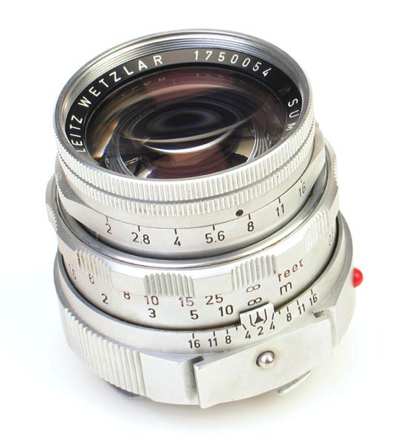
Leitz 50mm Dual Range Summicron
Macro lenses have changed quite a bit since the above and are now easier to use than ever, as my forthcoming pieces on my experiences will show.